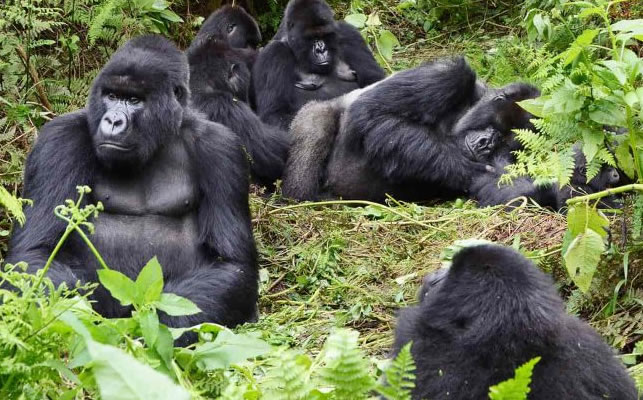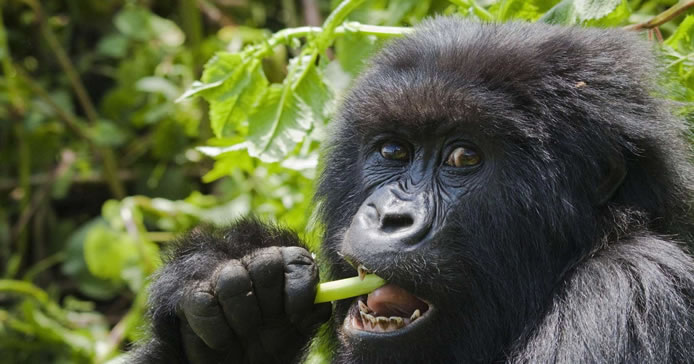
Gorillas are the largest ape primate species that spend their life span in the forest. They are man’s second-closest relative after the chimpanzees and they contain 98.3% of the human DNA. Gorillas are divided into two species the eastern gorillas which are also subdivided into mountain Gorillas and eastern lowland gorillas and the western gorillas divided into the cross river gorillas.
Gorillas are mostly found in the central sub-Sahara Africa. The gorilla’s gestation period is 257 days and they can live to over 50-60 years. The weight of female gorilla is half of the male gorilla. These are herbivorous species that feed on fresh leaves, plants and fruits. They live in a group called a troop and it comprises of over 30 members led by the silverback.
- Gorillas spend most of its time in the forest
They inhabit in the sub-Sahara Africa and half of the estimated mountain gorillas number is in the Bwindi impenetrable forest and this is the best destination for gorilla expeditions in Africa. They do swing on tree branches ascending from bottom to the top as they move to other branches attracting people’s attention.
- Gorillas share over 98.3% of human DNA
They possess over 98.3% of human DNA in that they do similar things like that of a human being. They have hands with big webbed thumbs and can stand on their two legs and sometimes walk upright. In the process of running, they use both the hands and the hind legs. They adapt to human ways for example koko the famous female gorilla known internationally for learning the common sigh language and over 2000 English words.
- Gorillas are shy
Gorillas are shy creatures when looked face to face and straight in the eyes. But sometimes when threatened they get aggressive striking back to the opponent in a fierce manner. They make loud grunt roars beating hard their chests when they get angry.
- Live in Troops
Gorillas live in a troop of over 30 members led by the silverback a male gorilla. It’s the role of the silverback to lead and also protect the troop. A troop has to have one silverback and the rest of the members are all females with their young ones. The female gorillas fight till their last breath to protect their young ones, they also make vine nests where the little ones rest.
- Gorillas are Habivorous
Gorillas are herbivorous hence feed on vegetables, fresh leaves, plants, roots and jungle fruits. Since they spend their entire life in the forest, it’s easier for them to collect the gorilla diet for easy survival in the jungle. It’s believed that gorillas hardly take water but the little water is obtained from the fresh vegetables.
- Gestation Period
The gestation period of a gorilla is 257 days and they give birth after 4-5 years. It’s very difficult to tell that a gorilla is pregnant because it has a round stomach even after feeding. Gorillas get pregnant at the age of 10 years.
- Gorillas show emotions
Gorillas are full of emotions when they interact with people. The young ones are friendly and when tickled they laugh and if hurt they cry and show misery. They get excited when they see people and make different sounds to express their joy while others pose when photos are taken.
- Gorillas are gentle and calm
Some refer to gorillas as terrestrial and others violent according to movies watched such as the Rise of the planet of apes. Their calmness is seen when they don’t compete for territories. Most of their time is spent gathering food across large areas.
- Gorillas suffer threats from Humans
Humans are a great threat to gorillas by hunting them for illegal trade and meat. They also encroach on human settlement and industrial activities.
It’s interesting to interact with gorillas. Book a gorilla safari to meet the endangered ranked giants in the East African countries such as Uganda, Rwanda and the Democratic Republic of Congo.


